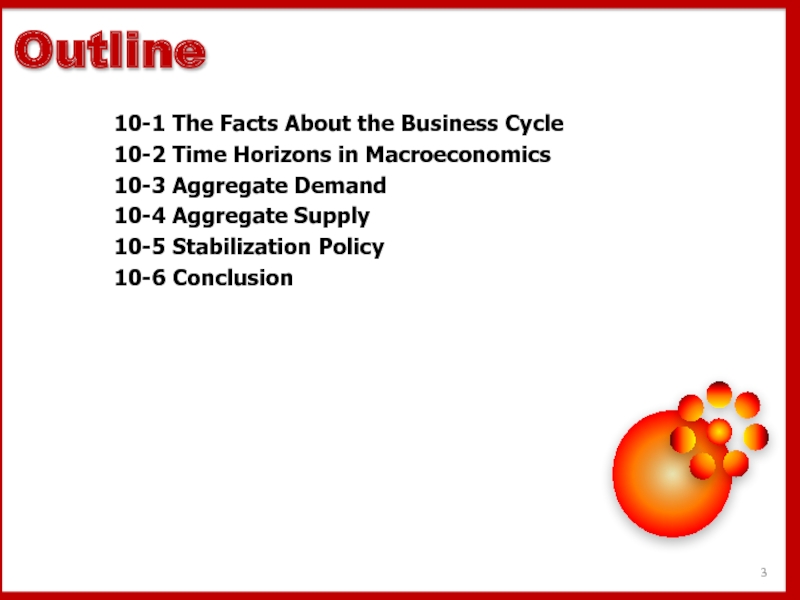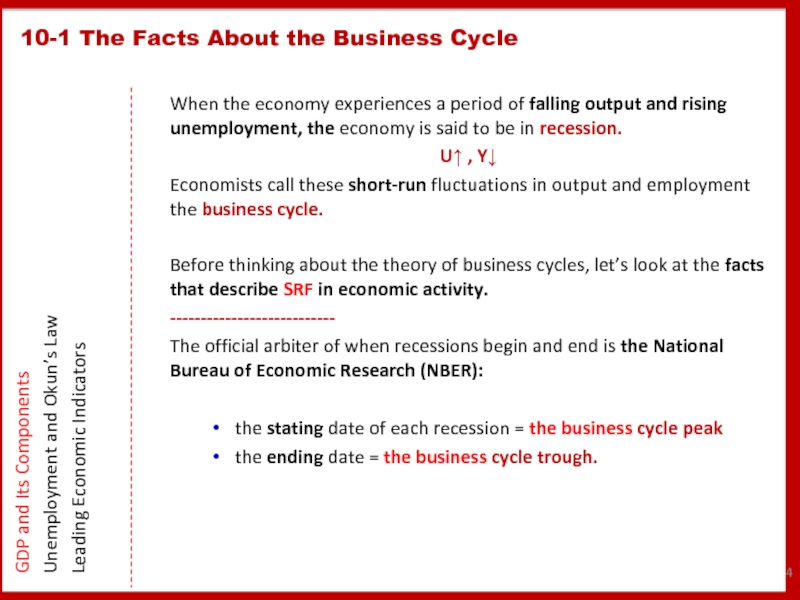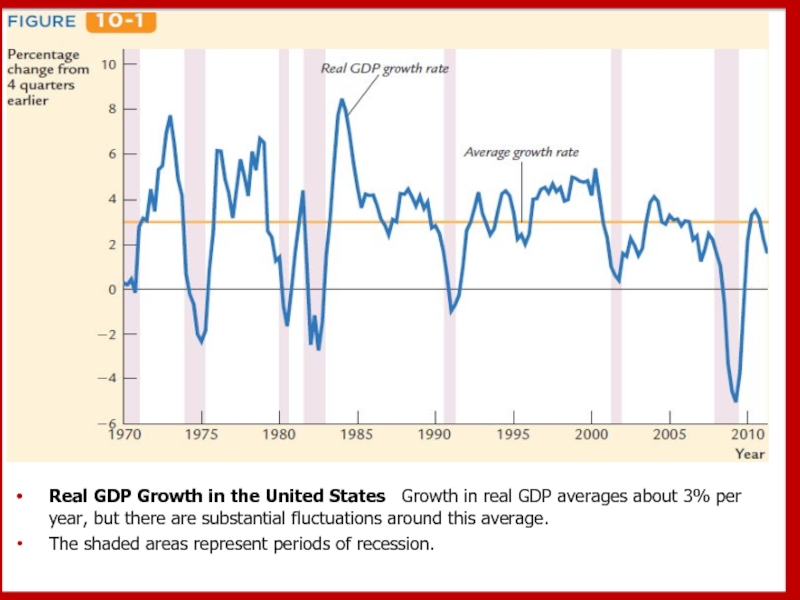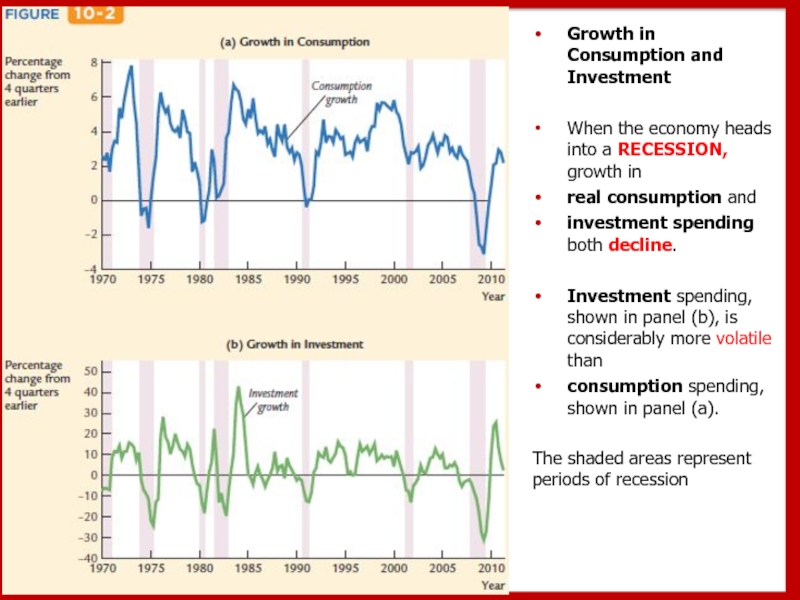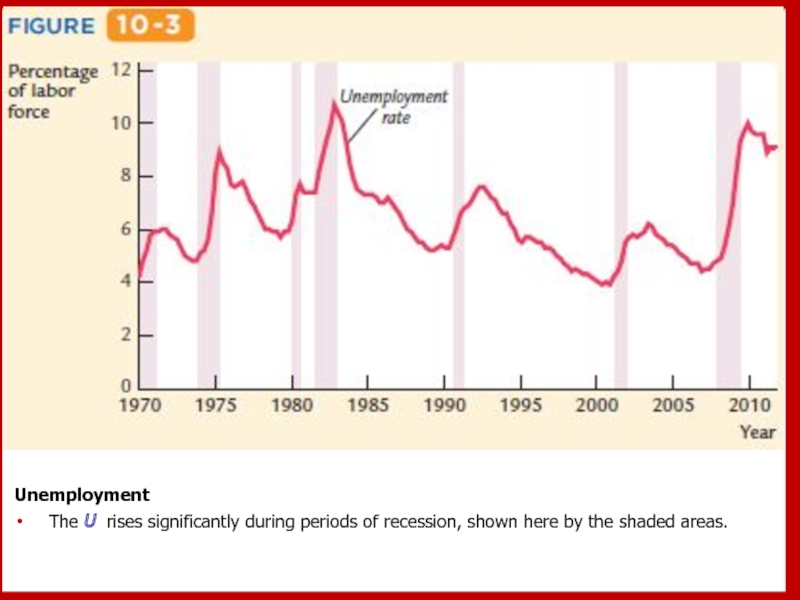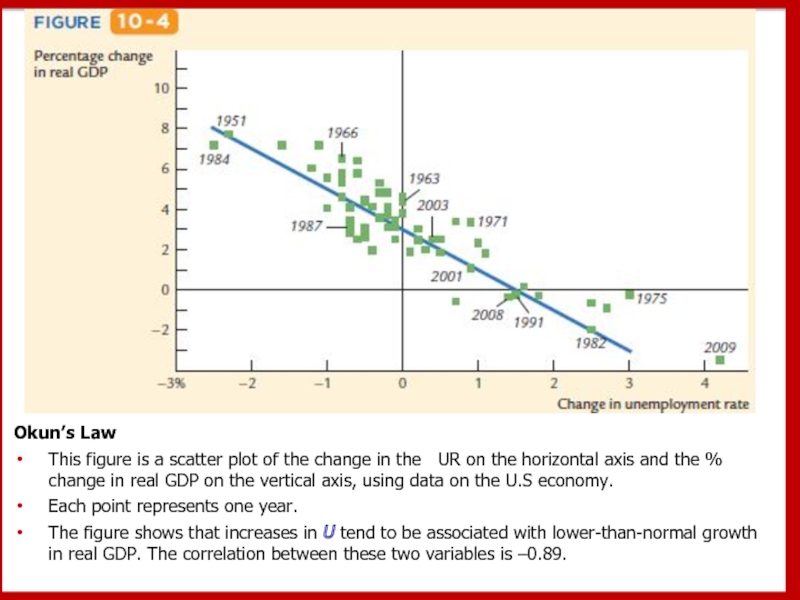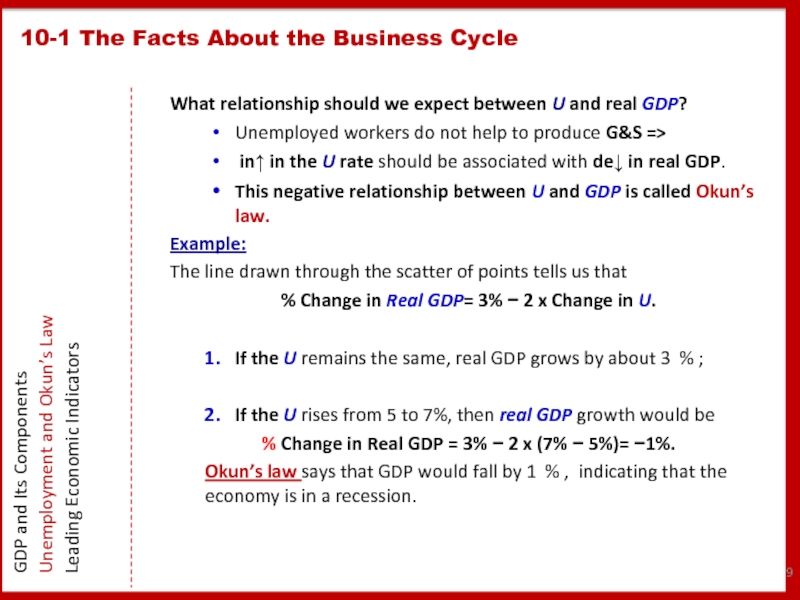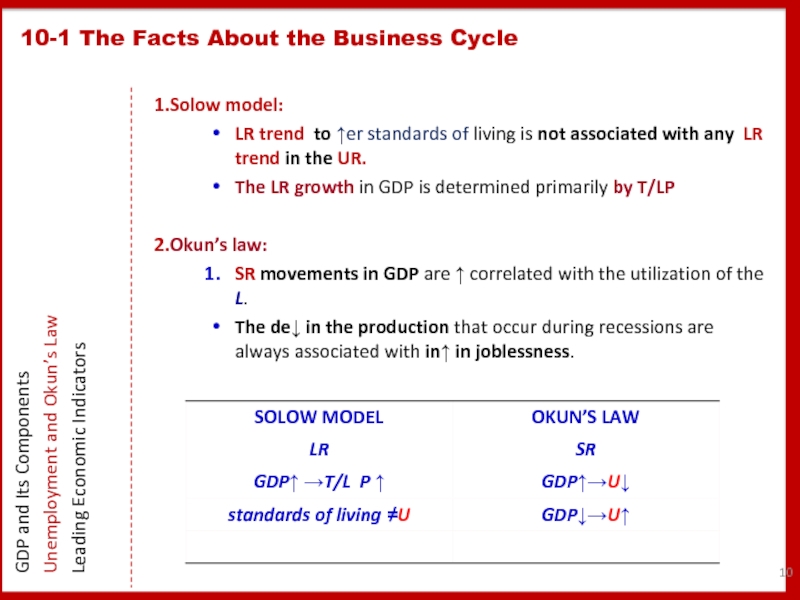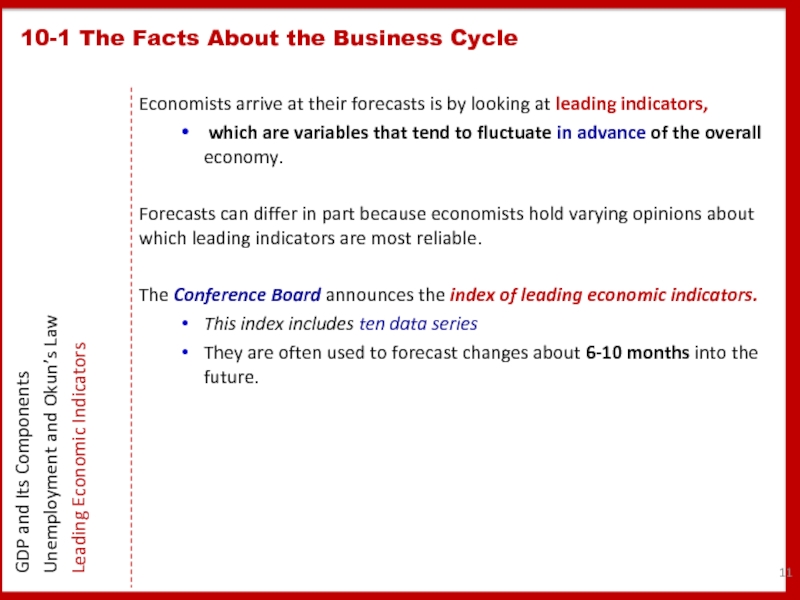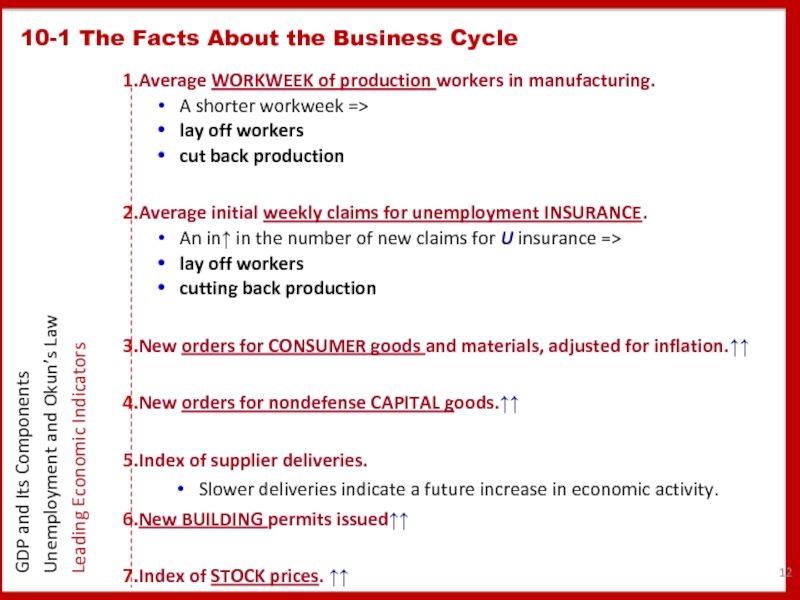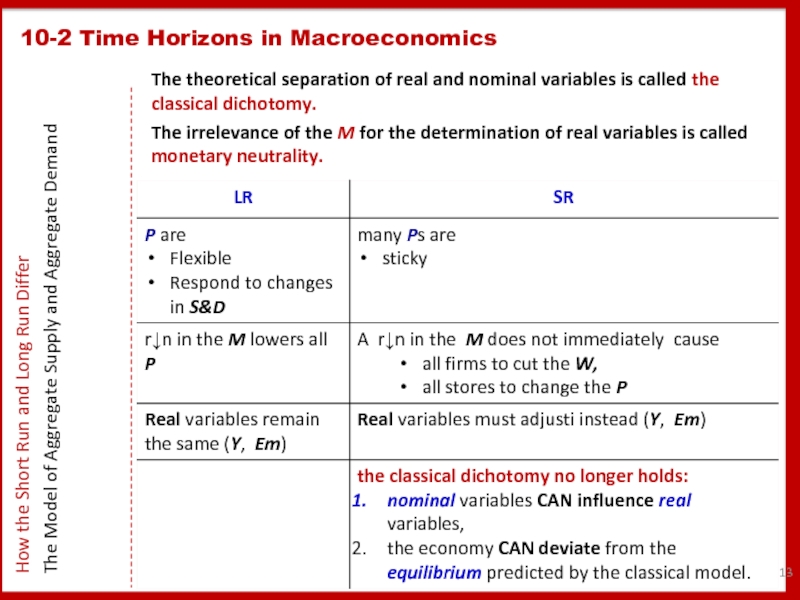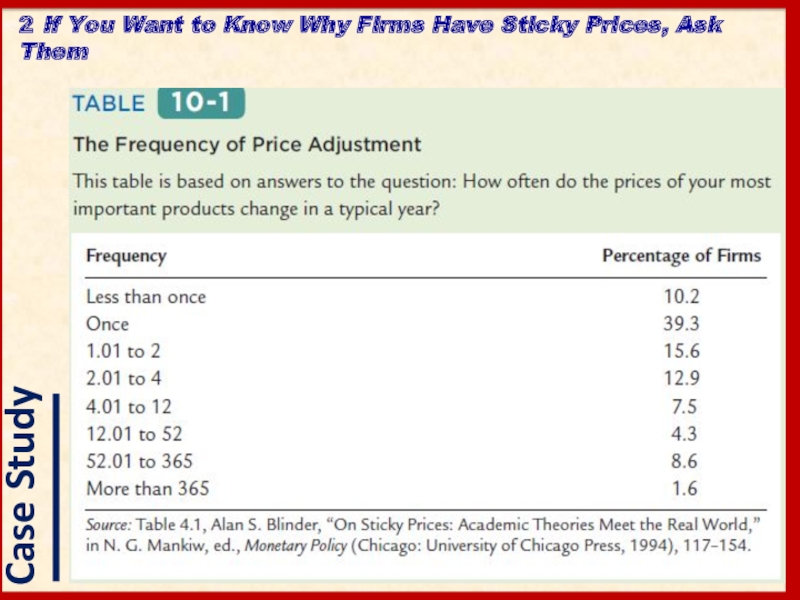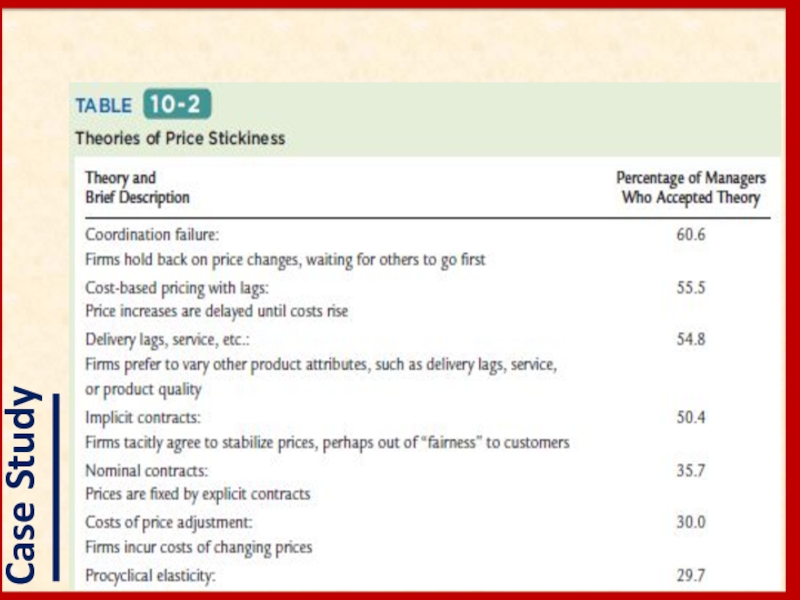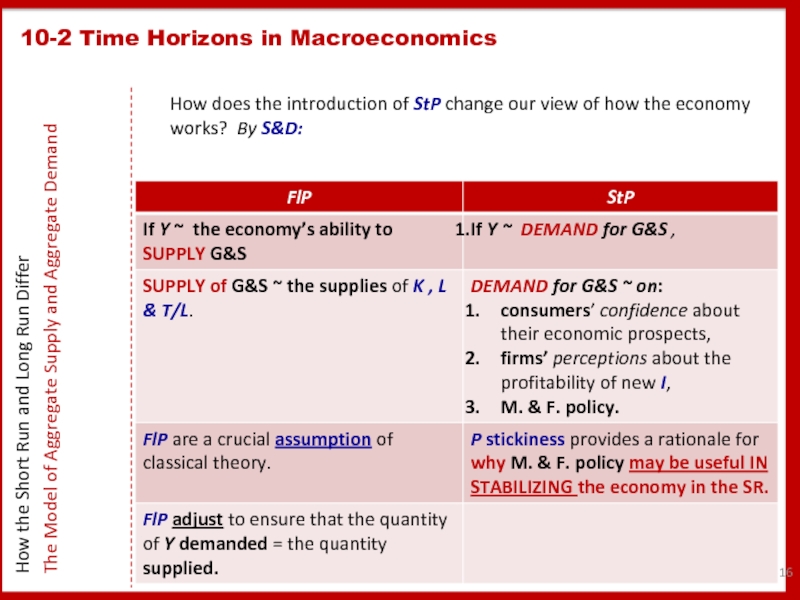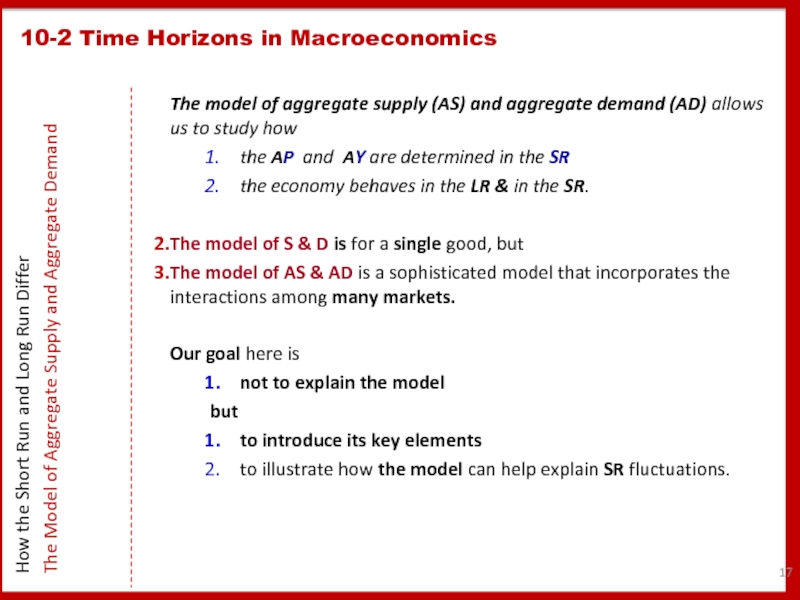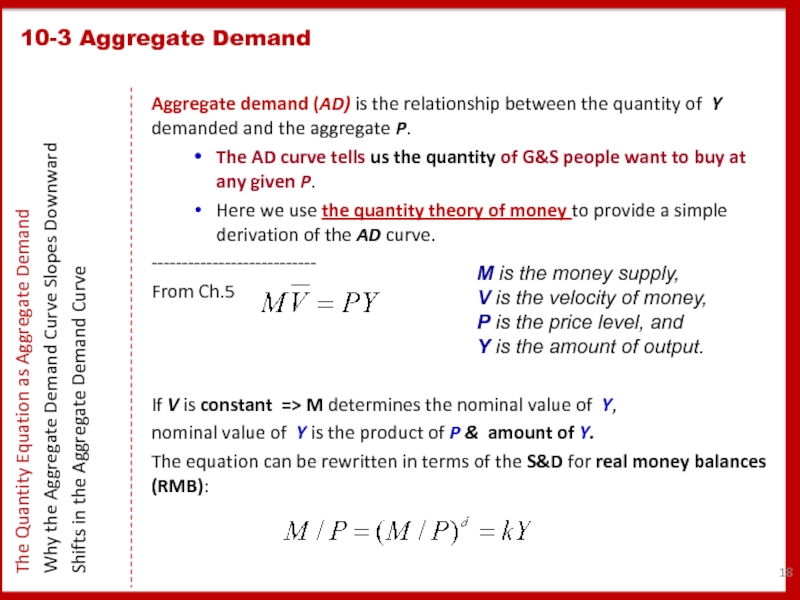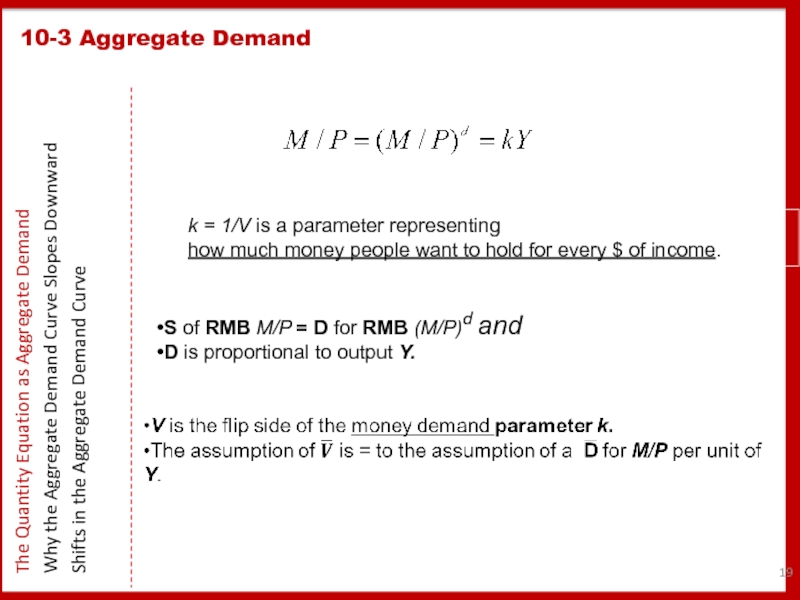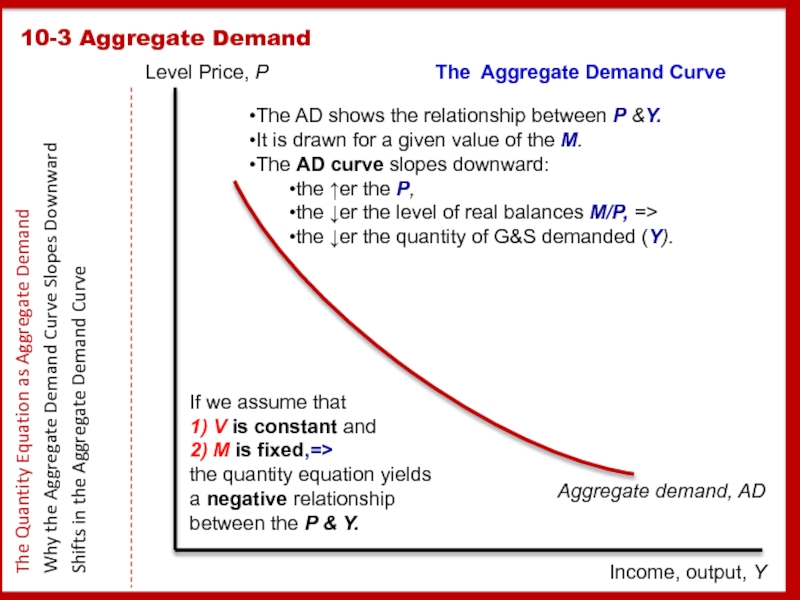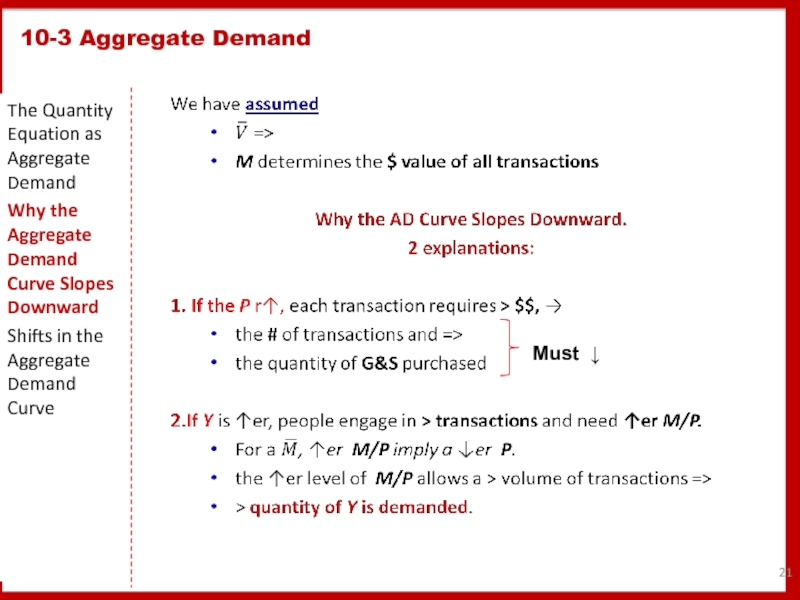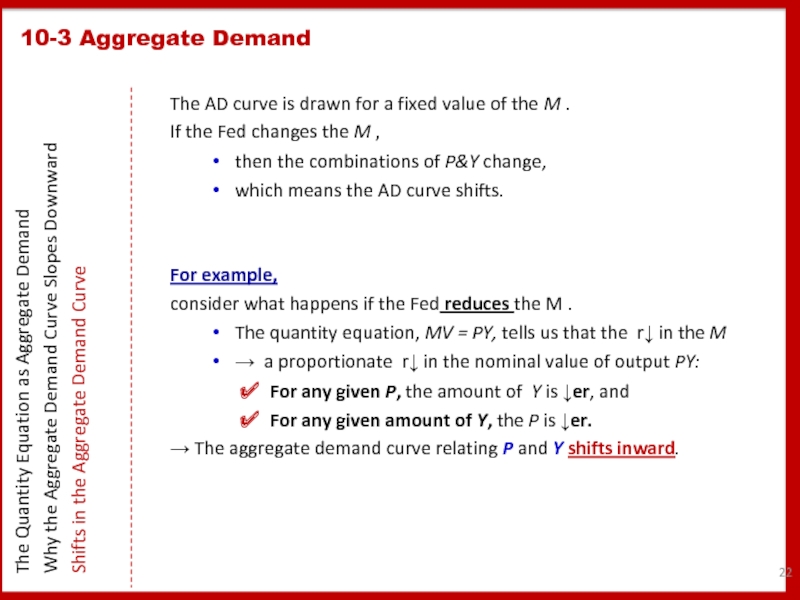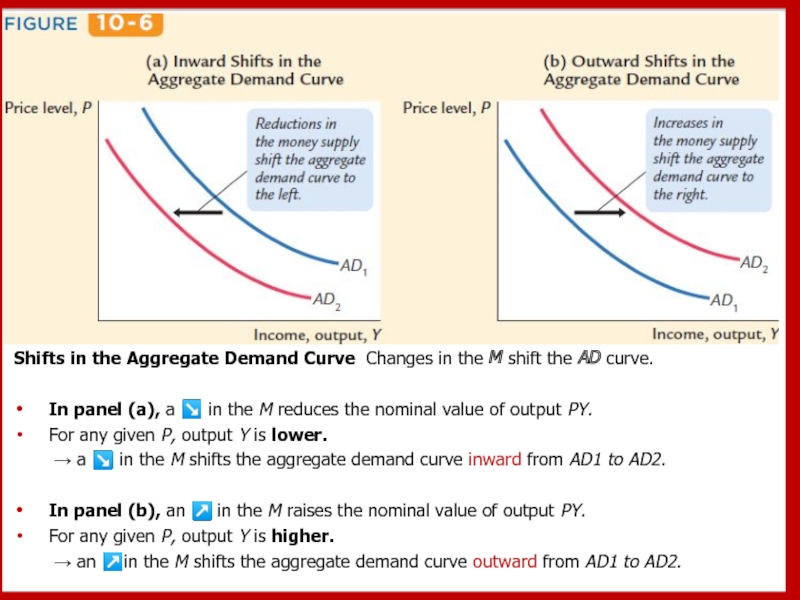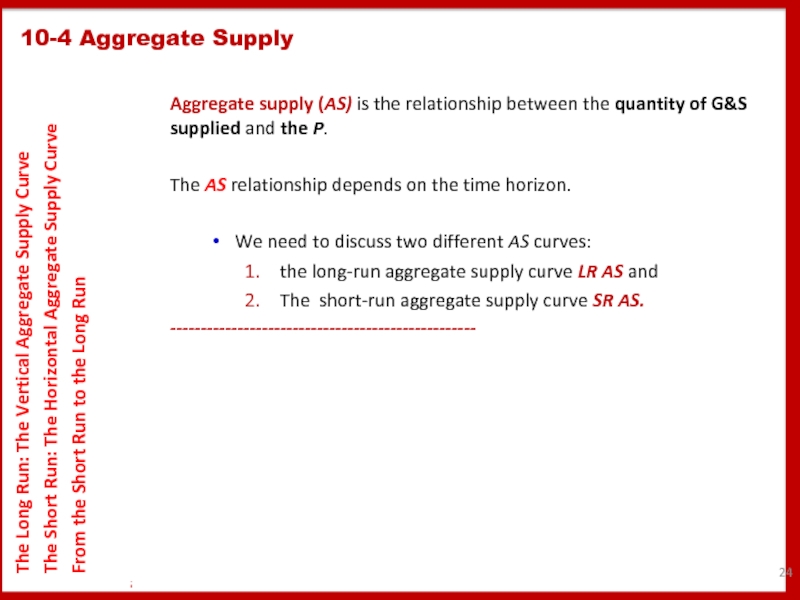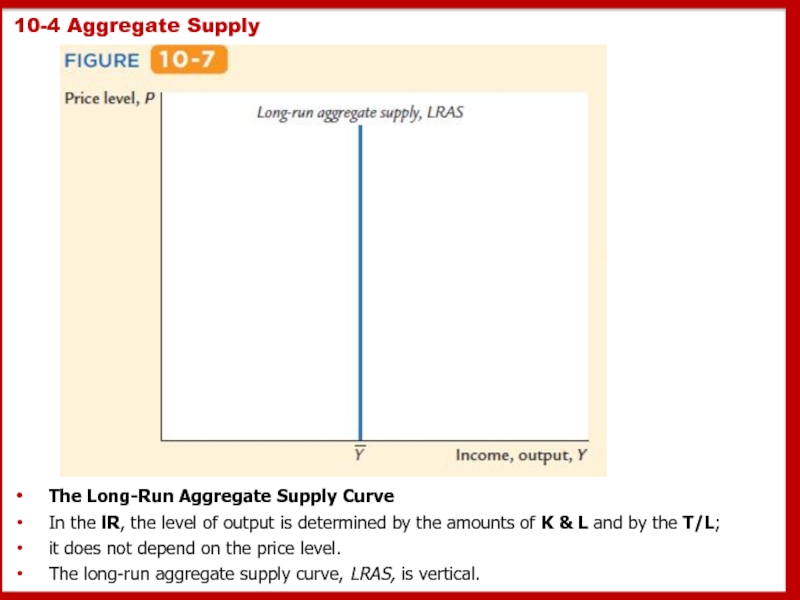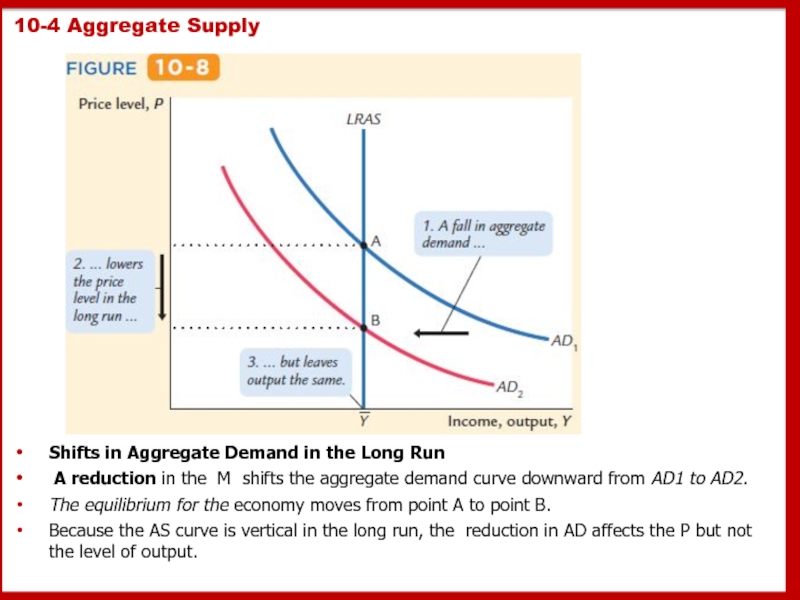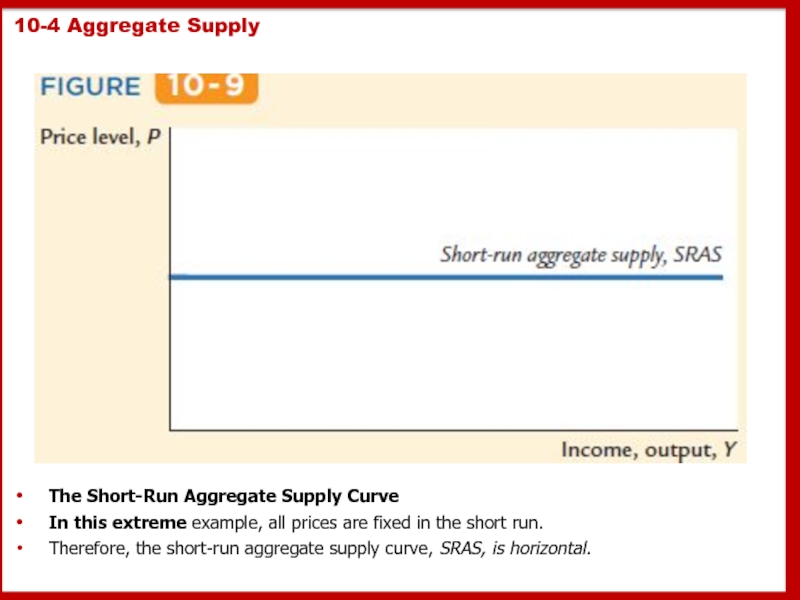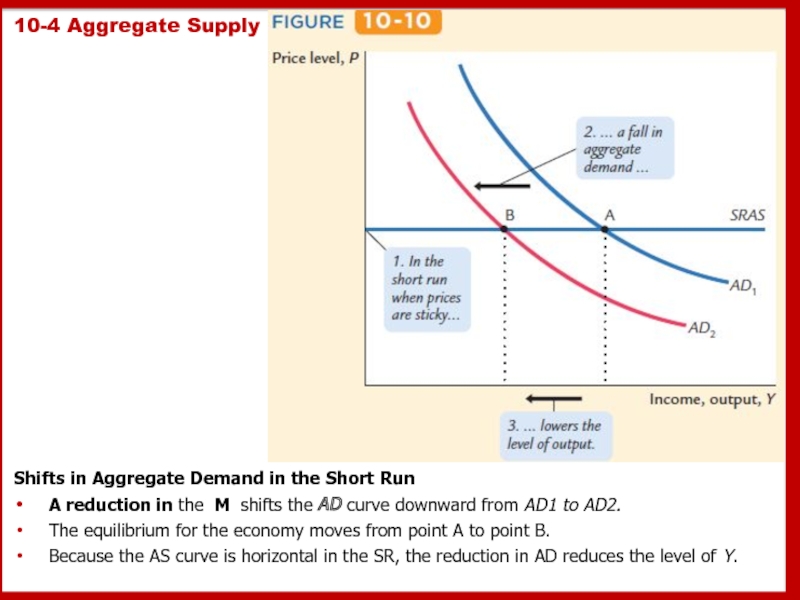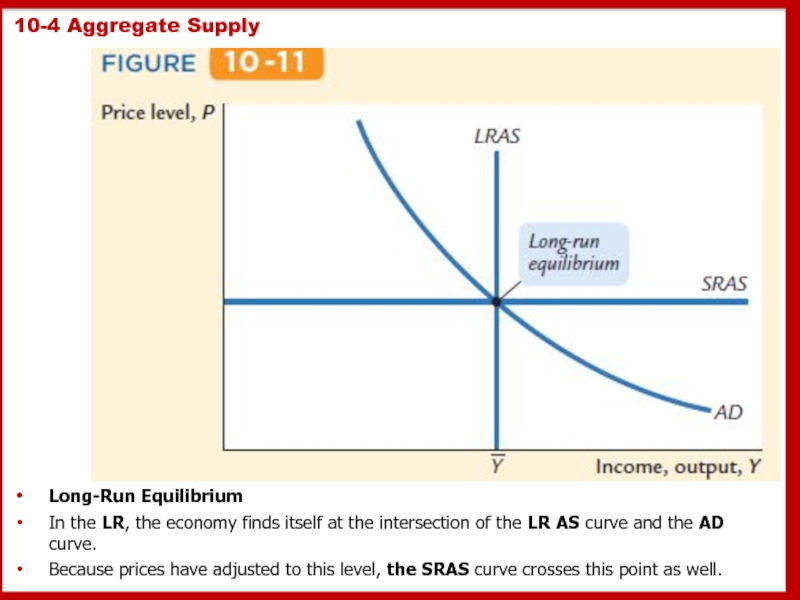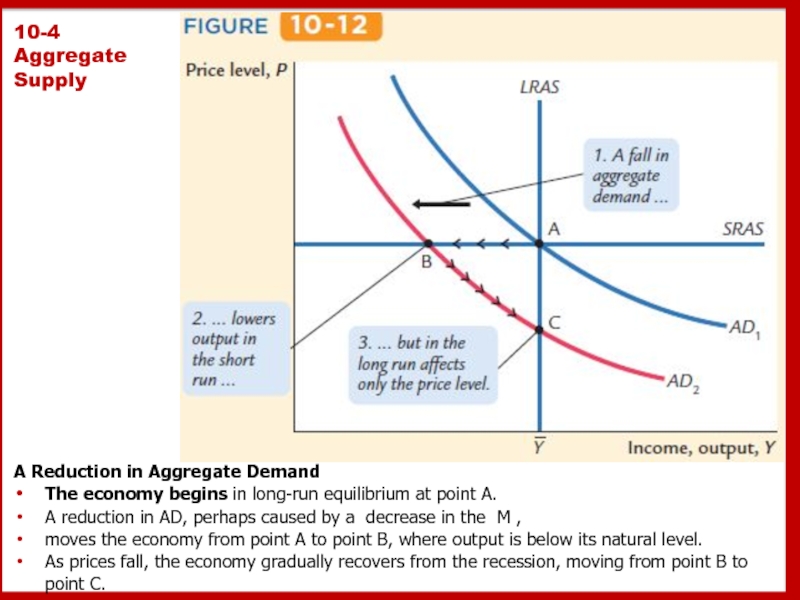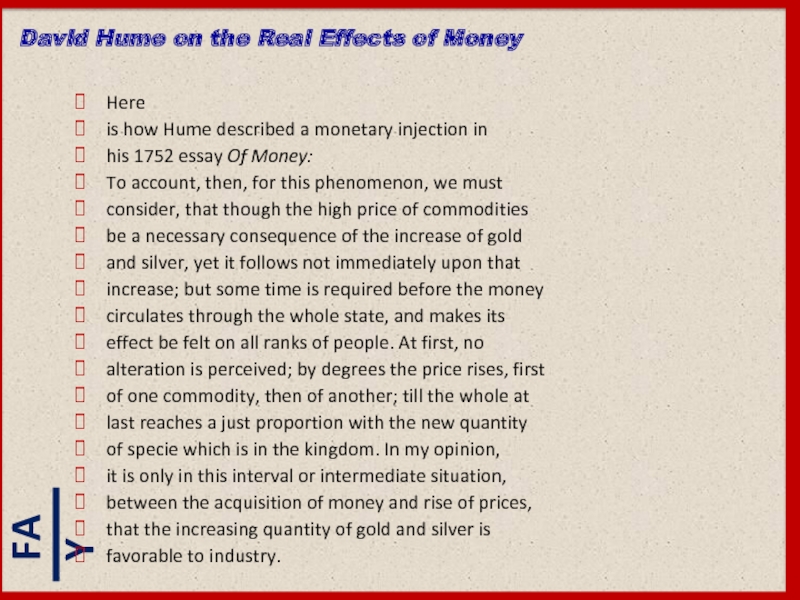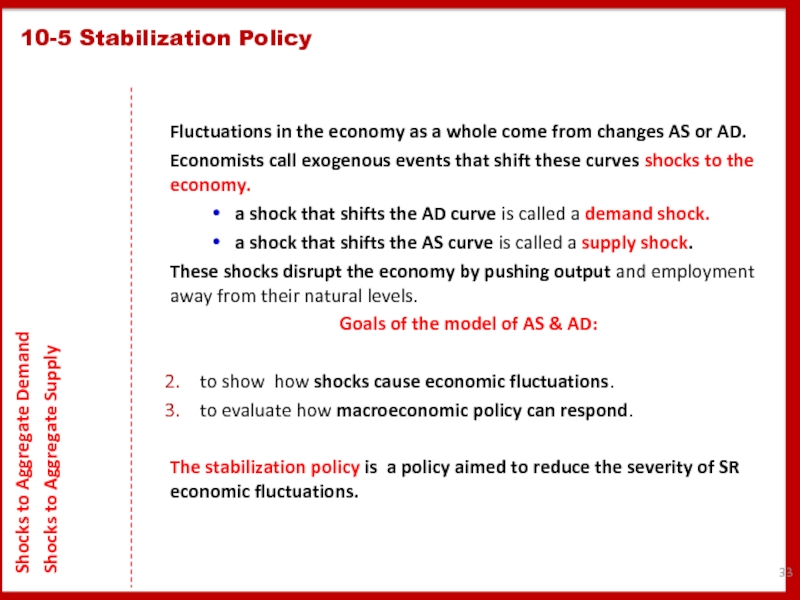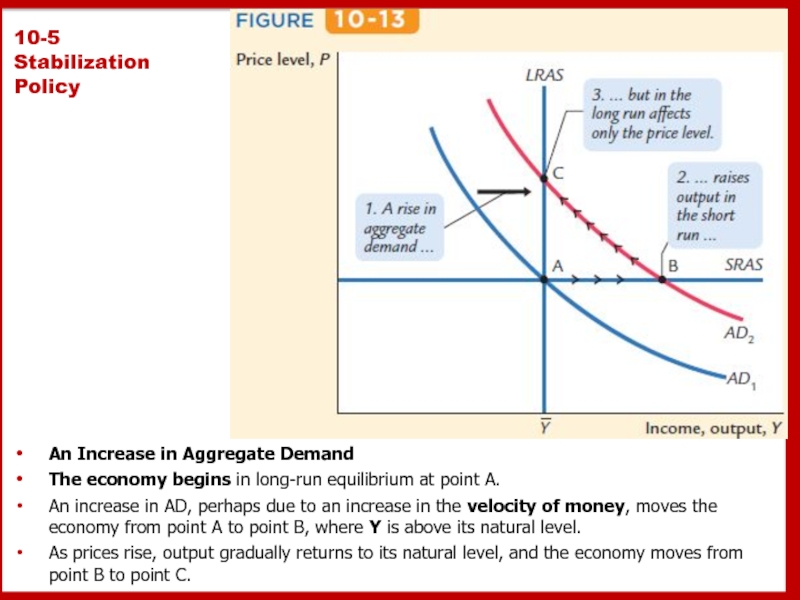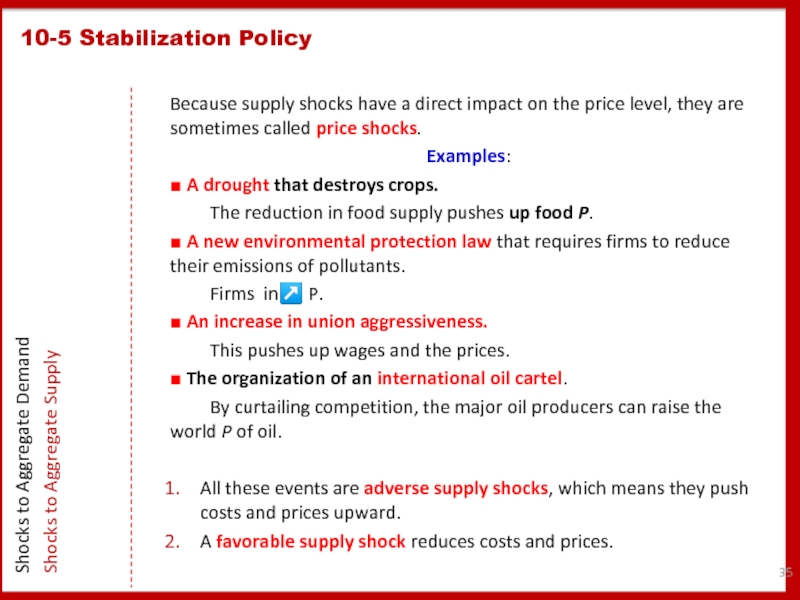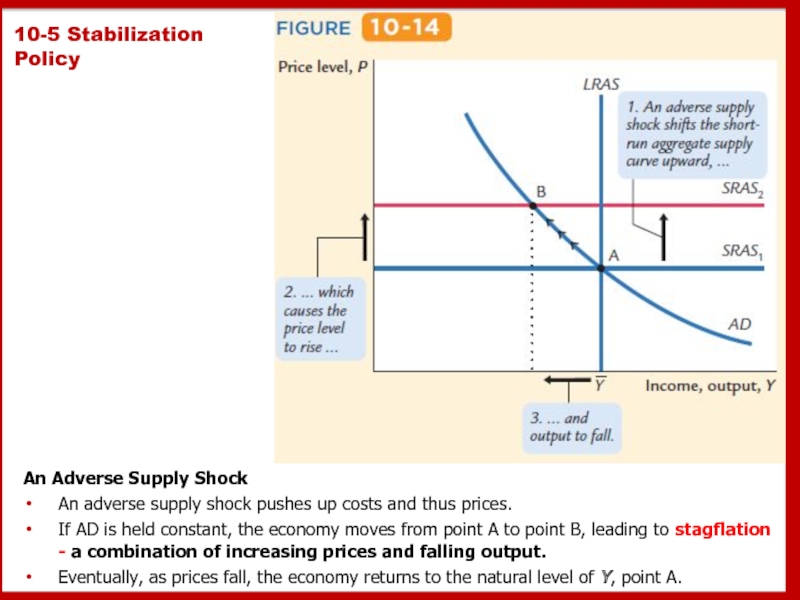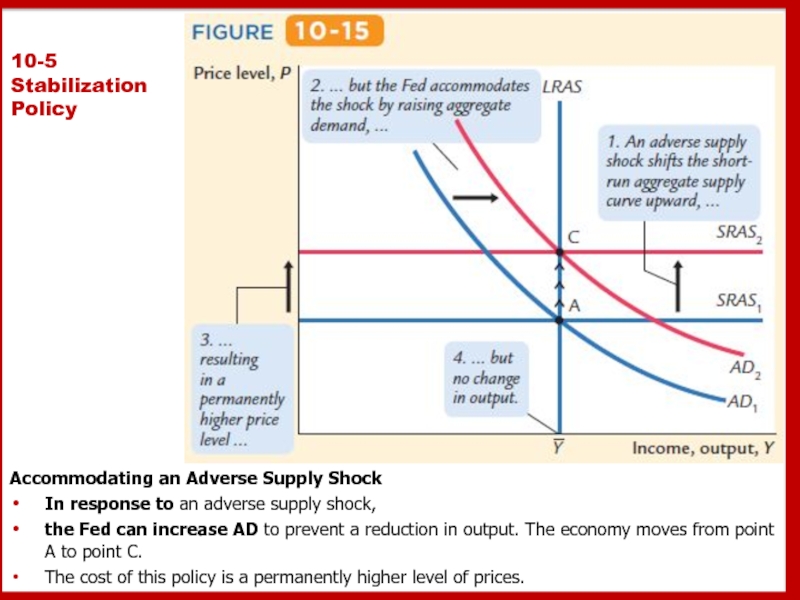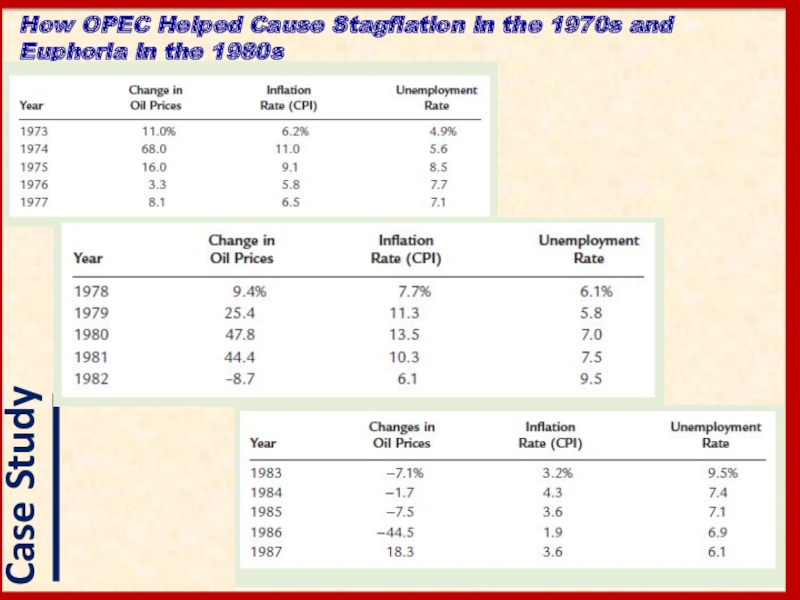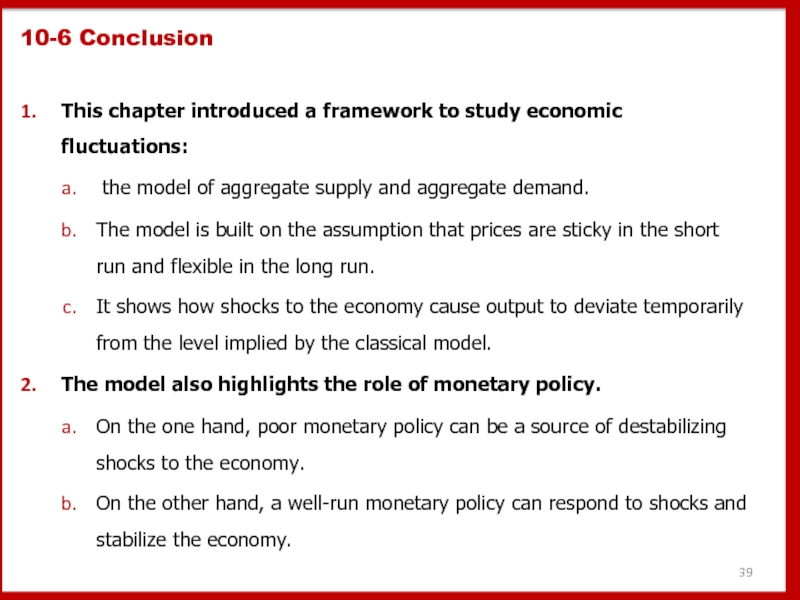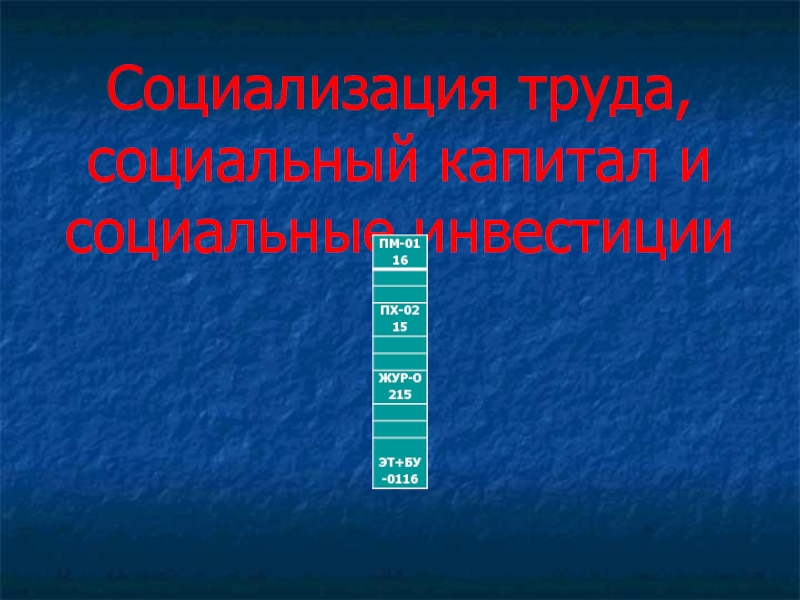- Главная
- Разное
- Дизайн
- Бизнес и предпринимательство
- Аналитика
- Образование
- Развлечения
- Красота и здоровье
- Финансы
- Государство
- Путешествия
- Спорт
- Недвижимость
- Армия
- Графика
- Культурология
- Еда и кулинария
- Лингвистика
- Английский язык
- Астрономия
- Алгебра
- Биология
- География
- Детские презентации
- Информатика
- История
- Литература
- Маркетинг
- Математика
- Медицина
- Менеджмент
- Музыка
- МХК
- Немецкий язык
- ОБЖ
- Обществознание
- Окружающий мир
- Педагогика
- Русский язык
- Технология
- Физика
- Философия
- Химия
- Шаблоны, картинки для презентаций
- Экология
- Экономика
- Юриспруденция
Business Cycle Theory: The Economy in the Short Run презентация
Содержание
- 1. Business Cycle Theory: The Economy in the Short Run
- 2. INTRODUCTION TO ECONOMIC FLUCTUATIONS 10
- 3. 10-1 The Facts About the Business Cycle
- 4. When the economy experiences a period of
- 5. Real GDP Growth in the United States
- 6. Growth in Consumption and Investment When
- 7. Unemployment The U rises significantly
- 8. Okun’s Law This figure is
- 9. What relationship should we expect between U
- 10. 10-1 The Facts About the Business Cycle
- 11. Economists arrive at their forecasts is by
- 12. Average WORKWEEK of production workers in manufacturing.
- 13. The theoretical separation of real and nominal
- 14. 2 If You Want to Know Why Firms Have Sticky Prices, Ask Them
- 16. How does the introduction of StP change
- 17. 10-2 Time Horizons in Macroeconomics How the
- 18. Aggregate demand (AD) is the relationship between
- 19. 10-3 Aggregate Demand The Quantity Equation as
- 20. 10-3 Aggregate Demand The Quantity Equation as
- 21. 10-3 Aggregate Demand The Quantity Equation
- 22. 10-3 Aggregate Demand The Quantity Equation as
- 23. Shifts in the Aggregate Demand Curve
- 24. 10-4 Aggregate Supply The Long Run: The
- 25. 10-4 Aggregate Supply The Long-Run Aggregate Supply
- 26. 10-4 Aggregate Supply Shifts in Aggregate Demand
- 27. 10-4 Aggregate Supply The Short-Run Aggregate Supply
- 28. 10-4 Aggregate Supply Shifts in Aggregate Demand
- 29. 10-4 Aggregate Supply Long-Run Equilibrium In
- 30. 10-4 Aggregate Supply A Reduction in Aggregate
- 31. The story begins with the unusual nature
- 32. Here is how Hume described a monetary
- 33. Fluctuations in the economy as a
- 34. 10-5 Stabilization Policy An Increase in
- 35. Because supply shocks have a direct impact
- 36. 10-5 Stabilization Policy An Adverse Supply
- 37. 10-5 Stabilization Policy Accommodating an Adverse
- 38. How OPEC Helped Cause Stagflation in the 1970s and Euphoria in the 1980s
- 39. 10-6 Conclusion This chapter introduced a framework
Слайд 310-1 The Facts About the Business Cycle
10-2 Time Horizons in Macroeconomics
10-3
10-4 Aggregate Supply
10-5 Stabilization Policy
10-6 Conclusion
Слайд 4When the economy experiences a period of falling output and rising
U↑ , Y↓
Economists call these short-run fluctuations in output and employment the business cycle.
Before thinking about the theory of business cycles, let’s look at the facts that describe SRF in economic activity.
---------------------------
The official arbiter of when recessions begin and end is the National Bureau of Economic Research (NBER):
the stating date of each recession = the business cycle peak
the ending date = the business cycle trough.
10-1 The Facts About the Business Cycle
GDP and Its Components
Unemployment and Okun’s Law
Leading Economic Indicators
Слайд 5Real GDP Growth in the United States Growth in real
The shaded areas represent periods of recession.
Слайд 6Growth in Consumption and Investment
When the economy heads into a RECESSION,
real consumption and
investment spending both decline.
Investment spending, shown in panel (b), is considerably more volatile than
consumption spending, shown in panel (a).
The shaded areas represent periods of recession
Слайд 7
Unemployment
The U rises significantly during periods of recession, shown here
Слайд 8
Okun’s Law
This figure is a scatter plot of the change
Each point represents one year.
The figure shows that increases in U tend to be associated with lower-than-normal growth in real GDP. The correlation between these two variables is –0.89.
Слайд 9What relationship should we expect between U and real GDP?
Unemployed workers
in↑ in the U rate should be associated with de↓ in real GDP.
This negative relationship between U and GDP is called Okun’s law.
Example:
The line drawn through the scatter of points tells us that
% Change in Real GDP= 3% − 2 x Change in U.
If the U remains the same, real GDP grows by about 3 % ;
If the U rises from 5 to 7%, then real GDP growth would be
% Change in Real GDP = 3% − 2 x (7% − 5%)= −1%.
Okun’s law says that GDP would fall by 1 % , indicating that the economy is in a recession.
10-1 The Facts About the Business Cycle
GDP and Its Components
Unemployment and Okun’s Law
Leading Economic Indicators
Слайд 1010-1 The Facts About the Business Cycle
GDP and Its Components
Unemployment and
Leading Economic Indicators
Solow model:
LR trend to ↑er standards of living is not associated with any LR trend in the UR.
The LR growth in GDP is determined primarily by T/LP
Okun’s law:
SR movements in GDP are ↑ correlated with the utilization of the L.
The de↓ in the production that occur during recessions are always associated with in↑ in joblessness.
Слайд 11Economists arrive at their forecasts is by looking at leading indicators,
Forecasts can differ in part because economists hold varying opinions about which leading indicators are most reliable.
The Conference Board announces the index of leading economic indicators.
This index includes ten data series
They are often used to forecast changes about 6-10 months into the future.
10-1 The Facts About the Business Cycle
GDP and Its Components
Unemployment and Okun’s Law
Leading Economic Indicators
Слайд 12Average WORKWEEK of production workers in manufacturing.
A shorter workweek =>
lay
cut back production
Average initial weekly claims for unemployment INSURANCE.
An in↑ in the number of new claims for U insurance =>
lay off workers
cutting back production
New orders for CONSUMER goods and materials, adjusted for inflation.↑↑
New orders for nondefense CAPITAL goods.↑↑
Index of supplier deliveries.
Slower deliveries indicate a future increase in economic activity.
New BUILDING permits issued↑↑
Index of STOCK prices. ↑↑
Money SUPPLY, adjusted for inflation. ↑↑
INTEREST rate spread.
A large spread =>
r are expected to rise,
economic activity increases.
Index of CONSUMER expectations. ↑↑
10-1 The Facts About the Business Cycle
GDP and Its Components
Unemployment and Okun’s Law
Leading Economic Indicators
Слайд 13The theoretical separation of real and nominal variables is called the
The irrelevance of the M for the determination of real variables is called monetary neutrality.
10-2 Time Horizons in Macroeconomics
How the Short Run and Long Run Differ
The Model of Aggregate Supply and Aggregate Demand
Слайд 16How does the introduction of StP change our view of how
10-2 Time Horizons in Macroeconomics
How the Short Run and Long Run Differ
The Model of Aggregate Supply and Aggregate Demand
Слайд 1710-2 Time Horizons in Macroeconomics
How the Short Run and Long Run
The Model of Aggregate Supply and Aggregate Demand
The model of aggregate supply (AS) and aggregate demand (AD) allows us to study how
the AP and AY are determined in the SR
the economy behaves in the LR & in the SR.
The model of S & D is for a single good, but
The model of AS & AD is a sophisticated model that incorporates the interactions among many markets.
Our goal here is
not to explain the model
but
to introduce its key elements
to illustrate how the model can help explain SR fluctuations.
Слайд 18Aggregate demand (AD) is the relationship between the quantity of Y
The AD curve tells us the quantity of G&S people want to buy at any given P.
Here we use the quantity theory of money to provide a simple derivation of the AD curve.
---------------------------
From Ch.5
If V is constant => M determines the nominal value of Y,
nominal value of Y is the product of P & amount of Y.
The equation can be rewritten in terms of the S&D for real money balances (RMB):
10-3 Aggregate Demand
The Quantity Equation as Aggregate Demand
Why the Aggregate Demand Curve Slopes Downward
Shifts in the Aggregate Demand Curve
M is the money supply,
V is the velocity of money,
P is the price level, and
Y is the amount of output.
Слайд 1910-3 Aggregate Demand
The Quantity Equation as Aggregate Demand
Why the Aggregate Demand
Shifts in the Aggregate Demand Curve
k = 1/V is a parameter representing
how much money people want to hold for every $ of income.
S of RMB M/P = D for RMB (M/P)d and
D is proportional to output Y.
Слайд 2010-3 Aggregate Demand
The Quantity Equation as Aggregate Demand
Why the Aggregate Demand
Shifts in the Aggregate Demand Curve
Level Price, P
Income, output, Y
Aggregate demand, AD
The Aggregate Demand Curve
The AD shows the relationship between P &Y.
It is drawn for a given value of the M.
The AD curve slopes downward:
the ↑er the P,
the ↓er the level of real balances M/P, =>
the ↓er the quantity of G&S demanded (Y).
If we assume that
1) V is constant and
2) M is fixed,=>
the quantity equation yields
a negative relationship
between the P & Y.
Слайд 21
10-3 Aggregate Demand
The Quantity Equation as Aggregate Demand
Why the Aggregate Demand
Shifts in the Aggregate Demand Curve
Must ↓
Слайд 2210-3 Aggregate Demand
The Quantity Equation as Aggregate Demand
Why the Aggregate Demand
Shifts in the Aggregate Demand Curve
The AD curve is drawn for a fixed value of the M .
If the Fed changes the M ,
then the combinations of P&Y change,
which means the AD curve shifts.
For example,
consider what happens if the Fed reduces the M .
The quantity equation, MV = PY, tells us that the r↓ in the M
→ a proportionate r↓ in the nominal value of output PY:
For any given P, the amount of Y is ↓er, and
For any given amount of Y, the P is ↓er.
→ The aggregate demand curve relating P and Y shifts inward.
Слайд 23
Shifts in the Aggregate Demand Curve Changes in the M shift
In panel (a), a ↘ in the M reduces the nominal value of output PY.
For any given P, output Y is lower.
→ a ↘ in the M shifts the aggregate demand curve inward from AD1 to AD2.
In panel (b), an ↗ in the M raises the nominal value of output PY.
For any given P, output Y is higher.
→ an ↗in the M shifts the aggregate demand curve outward from AD1 to AD2.
Слайд 2410-4 Aggregate Supply
The Long Run: The Vertical Aggregate Supply Curve
The Short
From the Short Run to the Long Run
Aggregate supply (AS) is the relationship between the quantity of G&S supplied and the P.
The AS relationship depends on the time horizon.
We need to discuss two different AS curves:
the long-run aggregate supply curve LR AS and
The short-run aggregate supply curve SR AS.
--------------------------------------------------
Слайд 2510-4 Aggregate Supply
The Long-Run Aggregate Supply Curve
In the lR, the
it does not depend on the price level.
The long-run aggregate supply curve, LRAS, is vertical.
Слайд 2610-4 Aggregate Supply
Shifts in Aggregate Demand in the Long Run
A
The equilibrium for the economy moves from point A to point B.
Because the AS curve is vertical in the long run, the reduction in AD affects the P but not the level of output.
Слайд 2710-4 Aggregate Supply
The Short-Run Aggregate Supply Curve
In this extreme example,
Therefore, the short-run aggregate supply curve, SRAS, is horizontal.
Слайд 2810-4 Aggregate Supply
Shifts in Aggregate Demand in the Short Run
A
The equilibrium for the economy moves from point A to point B.
Because the AS curve is horizontal in the SR, the reduction in AD reduces the level of Y.
Слайд 2910-4 Aggregate Supply
Long-Run Equilibrium
In the LR, the economy finds itself
Because prices have adjusted to this level, the SRAS curve crosses this point as well.
Слайд 3010-4 Aggregate Supply
A Reduction in Aggregate Demand
The economy begins in
A reduction in AD, perhaps caused by a decrease in the M ,
moves the economy from point A to point B, where output is below its natural level.
As prices fall, the economy gradually recovers from the recession, moving from point B to point C.
Слайд 31The story begins with the unusual nature of French money at
money stock in this economy included a variety of gold and silver coins that, in
contrast to modern money, did not indicate a specific monetary value. Instead, the
monetary value of each coin was set by government decree, and the government
could easily change the monetary value and thus the M . Sometimes
this would occur literally overnight. It is almost as if, while you were sleeping,
every $1 bill in your wallet was replaced by a bill worth only 80 cents.
Indeed, that is what happened on September 22, 1724. Every person in France
woke up with 20 % less money than he or she had the night before. Over
the course of seven months, the nominal value of the money stock was reduced
by about 45 % . The goal of these changes was to reduce prices in the
economy to what the government considered an appropriate level.
A Monetary Lesson From French History
Слайд 32Here
is how Hume described a monetary injection in
his 1752 essay Of
To account, then, for this phenomenon, we must
consider, that though the high price of commodities
be a necessary consequence of the increase of gold
and silver, yet it follows not immediately upon that
increase; but some time is required before the money
circulates through the whole state, and makes its
effect be felt on all ranks of people. At first, no
alteration is perceived; by degrees the price rises, first
of one commodity, then of another; till the whole at
last reaches a just proportion with the new quantity
of specie which is in the kingdom. In my opinion,
it is only in this interval or intermediate situation,
between the acquisition of money and rise of prices,
that the increasing quantity of gold and silver is
favorable to industry.
David Hume on the Real Effects of Money
Слайд 33
Fluctuations in the economy as a whole come from changes AS
Economists call exogenous events that shift these curves shocks to the economy.
a shock that shifts the AD curve is called a demand shock.
a shock that shifts the AS curve is called a supply shock.
These shocks disrupt the economy by pushing output and employment away from their natural levels.
Goals of the model of AS & AD:
to show how shocks cause economic fluctuations.
to evaluate how macroeconomic policy can respond.
The stabilization policy is a policy aimed to reduce the severity of SR economic fluctuations.
10-5 Stabilization Policy
Shocks to Aggregate Demand
Shocks to Aggregate Supply
Слайд 3410-5 Stabilization Policy
An Increase in Aggregate Demand
The economy begins
An increase in AD, perhaps due to an increase in the velocity of money, moves the economy from point A to point B, where Y is above its natural level.
As prices rise, output gradually returns to its natural level, and the economy moves from point B to point C.
Слайд 35Because supply shocks have a direct impact on the price level,
Examples:
■ A drought that destroys crops.
The reduction in food supply pushes up food P.
■ A new environmental protection law that requires firms to reduce their emissions of pollutants.
Firms in↗ P.
■ An increase in union aggressiveness.
This pushes up wages and the prices.
■ The organization of an international oil cartel.
By curtailing competition, the major oil producers can raise the world P of oil.
All these events are adverse supply shocks, which means they push costs and prices upward.
A favorable supply shock reduces costs and prices.
10-5 Stabilization Policy
Shocks to Aggregate Demand
Shocks to Aggregate Supply
Слайд 3610-5 Stabilization Policy
An Adverse Supply Shock
An adverse supply shock
If AD is held constant, the economy moves from point A to point B, leading to stagflation - a combination of increasing prices and falling output.
Eventually, as prices fall, the economy returns to the natural level of Y, point A.
Слайд 3710-5 Stabilization Policy
Accommodating an Adverse Supply Shock
In response to
the Fed can increase AD to prevent a reduction in output. The economy moves from point A to point C.
The cost of this policy is a permanently higher level of prices.
Слайд 3910-6 Conclusion
This chapter introduced a framework to study economic fluctuations:
the
The model is built on the assumption that prices are sticky in the short run and flexible in the long run.
It shows how shocks to the economy cause output to deviate temporarily from the level implied by the classical model.
The model also highlights the role of monetary policy.
On the one hand, poor monetary policy can be a source of destabilizing shocks to the economy.
On the other hand, a well-run monetary policy can respond to shocks and stabilize the economy.


